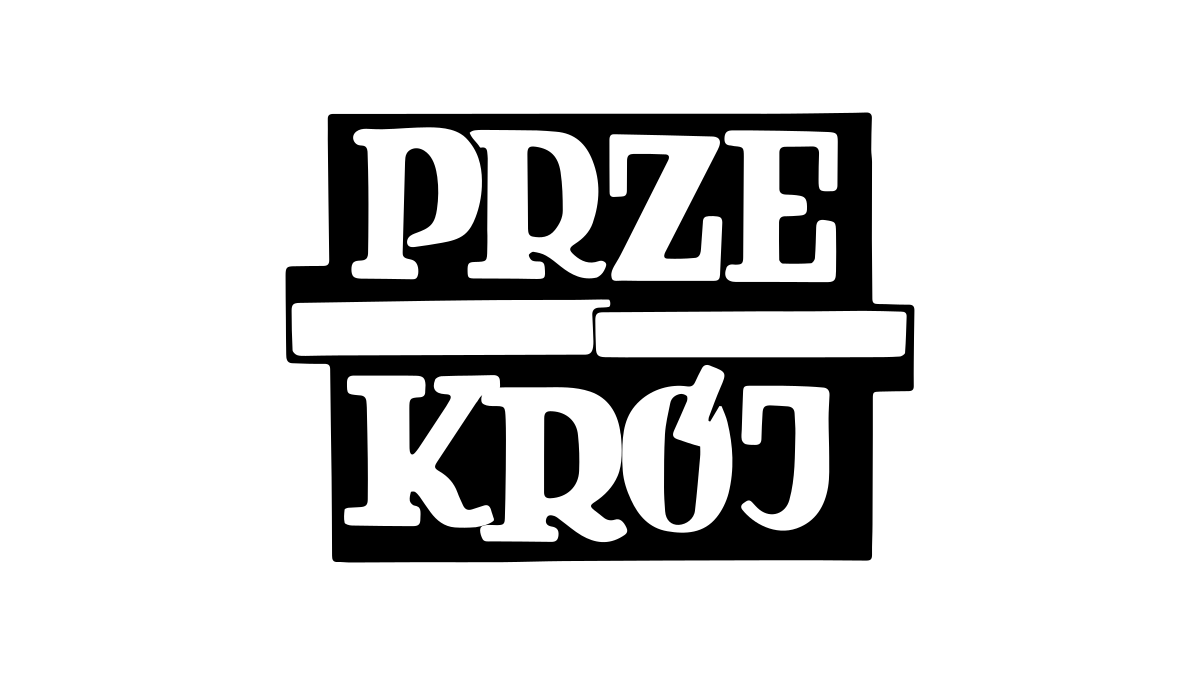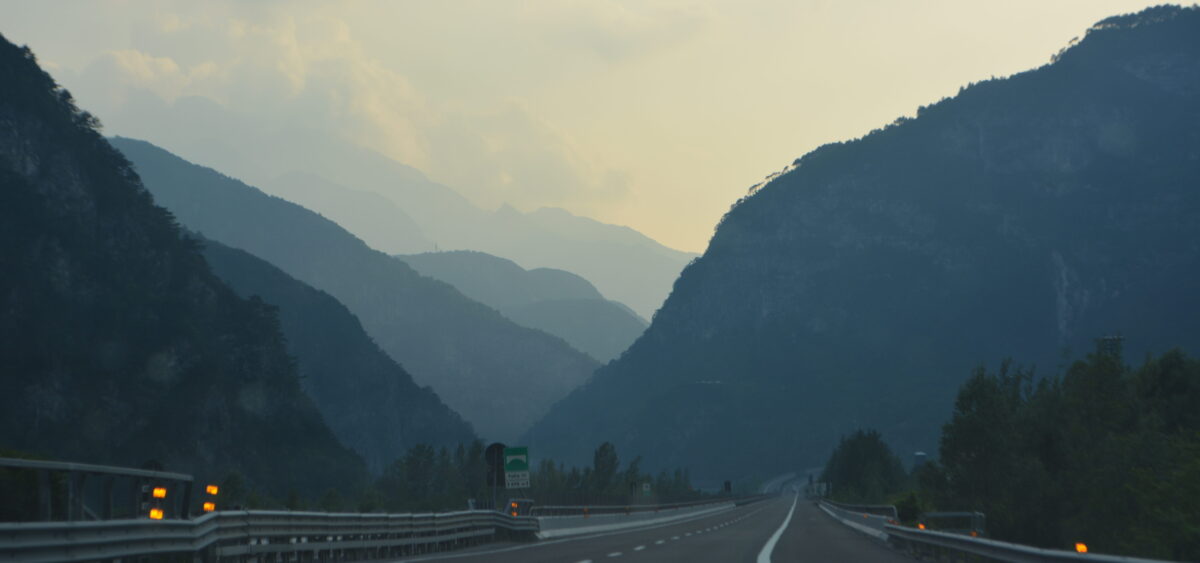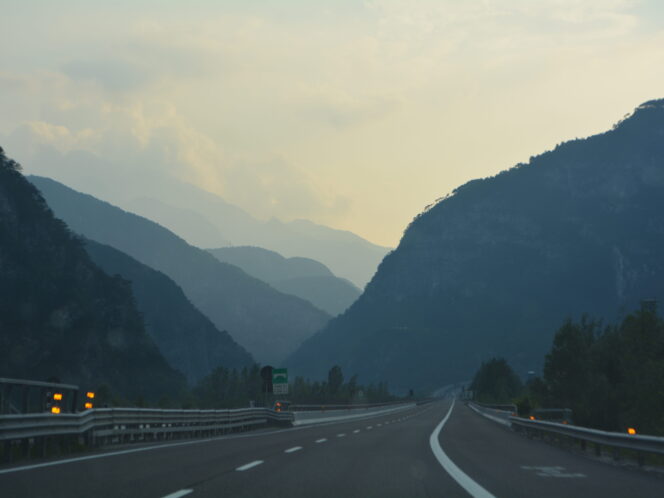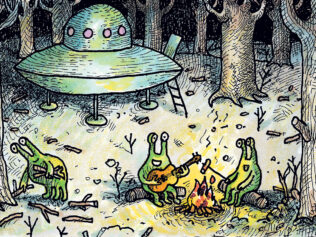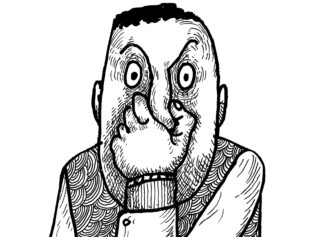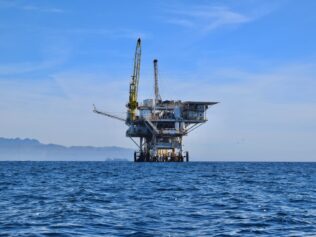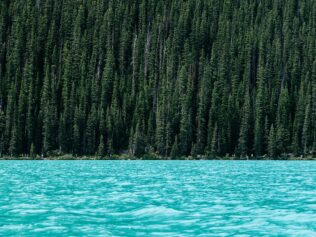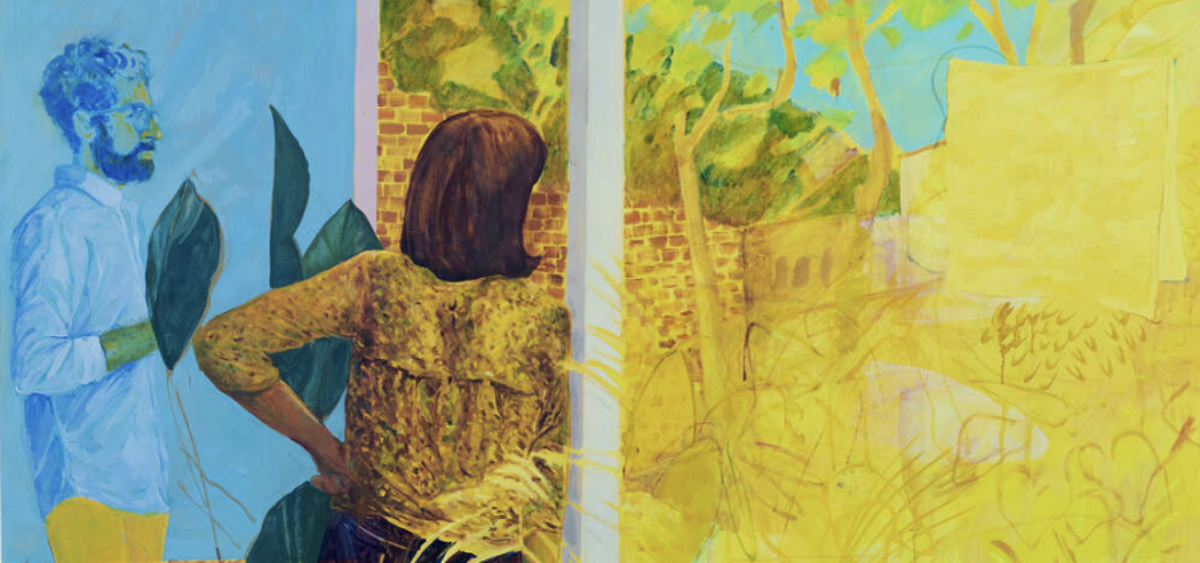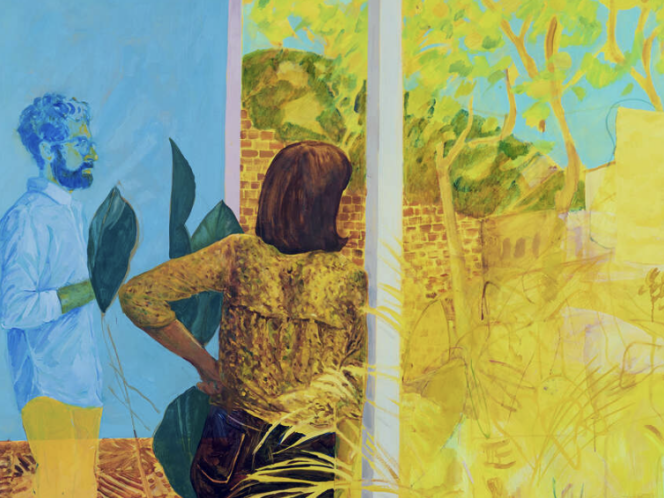
In some parts of the world, fires regularly rage through the forests. In others, drought grips entire cities. Hurricanes and floods hit still more regions, eroding coastlines. And as climate change continues to make entire swaths of our earth uninhabitable, it will require us to adapt. Not only to a physically changing world but to a population escaping to better climes.
In an interview with Natalia Domagała, environmental journalist and author of Nomad Century, Gaia Vince, discusses how climate change will cause widespread migration, what steps we can take to adapt to fast-changing populations, and how migration can actually prove beneficial for both immigrants and the countries that take them in.
Natalia Domagała: In your most recent book, Nomad Century, you state that migration will save us because it is migration that made us the way we are. Why did you decide to focus on migration and what attracted you to approaching climate change from this angle?
Gaia Vince: Most of my career has been spent looking at the relationship between the human systems that we create through cultural evolution, and the earth systems: the climate, geography, and the geology of our planet. Recently, we’ve been changing this in such a fundamental way that we’ve pushed ourselves into the Anthropocene, the age of humans. I’ve seen this firsthand and my first book looked at how humans at the frontline were responding to the challenges caused by climate change that was very much underway. Even though it wasn’t recognised by many of the Northern and Western nations, its impacts and extreme events were already felt in the Global South. It was a conversation about mitigation and adaptation, to raise the awareness that this is going to happen further north. Now that’s changed. Obviously, we are already experiencing climate change here in Europe, in the United States, in the “rich world.” But, although our leaders have started talking about mitigation and reducing emissions, and there is a little bit of conversation happening about adaptation, nobody is talking about something that I’ve already witnessed, which is that for large parts of the world, and large populations, the conditions over the next century will become too extreme.
There will be no way to adapt, people will have to move, but we are not talking about it at all. So this book was born out of frustration, but my last book was really about how did we get here, to the situation where humans are the most dominant force and have changed the planet? That’s the story of our cultural evolution from a tropical African ape to a species that now is dispersed across the planet. We live everywhere, from the Arctic to Antarctica, from the deserts to the tropics, from marshland to coastland–we are even in space, in the International Space Station. That is a story about our migration and the historic migrations that our species has taken over the last two hundred to three hundred thousand years, in various ways through our networks, and how it made us the very successful species that we are. We are in this state at the moment where the idea of lots of people moving is terrifying and seems very abnormal. And yet, that is what has created the species that we are, so it’s about trying to bring those two together to say: don’t panic, let’s talk about how we can manage this. Because we can, we do have choices.
What are the drivers of that human displacement that will make parts of the planet unlivable, possibly sooner than we think?
I call them the four horsemen of the Anthropocene: fire, flood, heat, and drought. These are the extreme events which affect people by either taking human lives and livelihoods, or destroying infrastructure and making agriculture impossible. When we emit our greenhouse gases, we disrupt the process of the sun’s energy being released back into space. Greenhouse gases trap this energy and as a result, we’re getting heat waves, much stronger drives and forces, including storms, violent erosions of coastlines, and atmospheric rivers—things that weren’t part of our normal meteorological conversation before, but are now becoming much more regular. Often, we get cascading events, as we had in India and Pakistan two years ago—we had months of unbearable heat and drought, which was then followed by a sudden and violent deluge of water: flooding that displaced thirty-three million people in about a week. That was followed by landslides which washed away infrastructure and housing, eroded the soil, and destroyed harvests. We’re seeing the same thing in Italy right now, as I’m speaking to you, in Emilia Romagna. When you have these kinds of back-to-back events, people don’t have the resilience to recover from one before they’re hit with another. We’ve moved away from a reliable climate to this new climate of extreme events that are not once in a century or once in a thousand years. They are frequent.
We are experiencing these intense events while on about 1.2 to 1.35 degrees Celcius above the pre-Industrial temperature average and we are likely to exceed 1.5 degrees within the next few years, certainly by the 2030s. The temperature is going to continue to go up and we’ll probably pass two degrees around mid-century. The way we’re headed at the moment, we could easily hit three degrees, possibly even higher, to four degrees, by the end of the century. If you look at the models for what that means for our planet, there is a broad range of unlivability across the tropics. This area extends up as far as southern Italy, Spain, and up through the Americas, through parts of China, and so on. It goes all the way down to almost Patagonia, Southern Africa, through Australia; this is a large part of the world that’s home to enormous populations. And if you add in coastlines, river deltas, and many of the world’s largest cities, we’re creating conditions where it would be too extreme and where large populations won’t be able to live. They will have to move for their survival to the places that are least affected, to the northern latitudes, including northern Europe, Canada, Siberia, and the Arctic. Some places will actually benefit, although everywhere will experience extreme conditions. Canada has been hit with really severe heat waves, over 50 degrees. It’s had forest fires, it’s had terrible floods, it’s experiencing a lot. But these areas further north will be able to adapt to the conditions better than what we are going to experience in the tropics. Everyone will have to adapt, but those are going to be places of refuge.
You also mention that this will create new opportunities for certain parts of the world that are currently too cold or inaccessible, for example, Churchill, Manitoba in Canada. How will these northern regions develop?
Throughout our history, as ice ages retreated, human populations expanded. Now, in this global economy, where we’re networked economically and culturally, these could become important zones from the trade perspective. As the ice in the Arctic retreats, sea passages open up and the growing seasons increase. We can already see the greening of the Arctic from space, it’s a really obvious sign of our warming planet. Those places will become more hospitable but they will need adapting because they have been frozen for millennia. Places like Churchill, Manitoba have quite a lot of potential for development. Churchill is in a strategically important place in the Hudson Bay, where it’s connected to routes that will open up between Asia and the Americas and Northern Europe. It’s also connected by rail all the way down to the United States and those transport links are really key. At the moment, Churchill is a small place of tourism for people who want to look at polar bears. Sadly, there will be very few polar bears, if any—I don’t think the wild polar bears are going to survive this century. Churchill will be completely changed but this could be a potential city that could be developed to become a place of immigration. Canada already has a program to triple its population over the coming decades and expand their economy. If you increase the labor force, then you increase productivity, so that’s a hopeful place. Scandinavia and places like Scotland also look to benefit.
Speaking of migration and how to approach it, at some point in the book you stressed that if we do this in a piecemeal way, in which those who can buy safety in the northern, less affected parts of the world, we actually risk an inequality of survival for all of us. How can we approach this climate-caused migration in a more equitable way and what changes in global governance are required to do that?
We are already seeing elements of this very unequal response. For example, New Zealand is going to be one of the safer places, and there was quite a big land grab from wealthy preppers buying land there, which the New Zealand government actually started putting a stop to. But this is a much bigger problem: we are seeing very unequal impacts around the world. If you consider who caused the emissions, who is the least responsible, and who is experiencing the worst aspects of climate change, there is this big social injustice. If you look at what we need to do to help large numbers of people from the Global South, these populations that will need to seek safety, and we think about a way of managing that, it is a planetary scale problem, just as climate change is a planetary scale problem. It does need some level of global governance. I suggest a new UN agency to oversee this—an agency that really has teeth and represents the different states, with funding from those states as well as the powers to actually help with relocations.
Migration is not a security issue, but states very much see it as such. It’s an economic issue, it’s about labor, about where people move for jobs. It’s also a humanitarian issue, so we need that labor force movement to be much better coordinated and managed. I think a global body is the only agency that can really oversee that process. We also need community-led initiatives, and we need city mayors to address this issue because has is to do with jobs, housing, health, and education access, all of which are best managed at the city level. We have to talk about this and plan it so that it isn’t a huge crisis; it doesn’t need to be. At the moment, in many of the safer countries in the north, there is a huge demographic issue: we’re not having enough babies to support our aging populations. The only real way to solve that is through immigration. We also have serious labor shortages. In my country, in Britain, we have labor shortages partly as a result of Brexit, which was a closing of borders and a reduction of the flow of labor. It’s led to a massive economic decline and huge labor shortages in everything from agricultural labor, to truck drivers, dentists, doctors, teachers, hospitality workers; you name it. If this is managed well, I see it working in a much more gradual fashion. People are best able to migrate post-school—that’s the time when they quite often leave their family homes and move to other areas; they carry out some form of migration to go to university or work. I think that’s the best and easiest time to help people move through education schemes and apprenticeships in different countries. Then they form the networks to help bring other family members over and they become the citizens that help grow their economies and cities.
We can see that in practice, especially in places like London. But for the world leaders and people who are more skeptical, what are some of the additional benefits of migration?
Immigration brings known economic benefits. There’s a huge wealth of studies out there that show that increased immigration helps boost economies, creates jobs, broadens the workforce, and boosts culture and innovation. Cities, the centers of migration, are the places that are most innovative culturally and scientifically, and the most productive economically precisely because of this synergy—they are greater than the sum of their parts. If you want your economies to grow, it’s important to make sure that you have that free-flowing labor. In fact, some economists reckon that if you took all borders away, which I’m not suggesting you do, you would at least double the global GDP immediately, just because you allow that labor to move around.
But mass migration in the numbers we’re expecting to see isn’t automatically a success. You will see those benefits, but they can take time, sometimes an entire generation. However, we don’t have that time and we can’t make a mistake. For it to work well, it needs to be managed, we need to plan this. That means investment, enough housing, access to health, education, and infrastructure to transport all the things that citizens need. Many governments are not providing these for their existing populations, let alone immigrants. That needs to be handled so that there isn’t a conflict over resources. Of course, many of the people coming in will be providing that: they will be the nursery teachers, the care workers, the hospital porters, the housing officers, the house builders. Just as importantly, you need social investment in the idea of a properly inclusive society, where there is an acknowledgement that these are not strangers that are just going to sit at the fringe of your society. In the case of Poland, they are part of what it means to be Polish, these are the new Poles or, in Germany, the new Germans, or the new Berliners, or the new British in the UK. That’s so important and it involves creating a new narrative, which we really don’t see at the moment.
We have a very toxic and divisive false narrative that is being spun about migrants. This is really dangerous but not surprising because we have seen the rise of populism. It’s a common trope; it’s very easy for populist leaders to blame their lack of success, or their policy failures on a marginalised group, a voiceless group, or whether it’s people of different skin color, immigrants, or people of different religions. However, what has also happened, which I think is a scandal, is this timidity, an abdication of responsibility by centrist, left-wing, and moderate right-wing leaders to challenge this with facts and a new narrative around immigration, which is the future. The idea that we have borders that we keep people out is very recent. Borders were all about keeping people in; rulers or kings wanted more people in to work the fields, in factories, or to join the military. They were not worried about people coming in, they just wanted to stop citizens from leaving. After the World War II, there were huge programs to increase immigration to help rebuild countries devastated after the war. In Britain we have the Windrush generation, bringing the citizens of former colonies to help build the National Health Service. In America and Australia, there were all sorts of programs to help people migrate.
The story of migration, the narrative we spin, is up to us. We’re trapped in this temporal cage where we think that everything has always been like this and everything else is too hard to change and too radical. You just lift your head slightly out of that cage, and you see that until quite recently, things were very different, and could be again. In fact, they will have to be because if you don’t like the idea of mass migration, then what is your solution, what is your proposal? If you don’t like the idea of managing people and making safer new communities that are larger, then are you suggesting that we can script our children to fight wars against these people? Because putting up walls and turning back boats and sending people to Rwanda, or whatever the latest plan is, that’s not going to work. It’s already not working for small thousands, it’s certainly not going to work when we see millions.
The estimate is that between two billion people will likely need to migrate by the end of the century. By 2050, the calculations are anywhere between hundreds of millions to 1.5 billion. In a way, it’s our choice how many, because it depends on how fast we mitigate, reduce our emissions, and help these countries adapt. There are a lot of adaptations that we can do to prevent people from having to leave their homes, but we’re not doing that either. Some of this is certainly our choice but if we’re not going to do any of those things, then people are going to have to leave in large numbers. At the moment, around 1 percent of the world’s land surface is unlivable simply due to heat, without looking at any of the other horsemen of the Anthropocene. By 2060 to 2070, that is likely to be 20 percent of the earth’s land surface unlivable due to heat, and that area is home to about a third of the world’s population. At the moment we are eight billion people but by the 2060s-2070s, we’ll be nine, possibly ten billion people. We’re talking about three billion people living in places that are unlivable just due to heat, not factoring in any other things like no food, floods, and fires breaking out. We do need to take this seriously, we need to plan it, and we need to talk about it, which is why I wrote the book.
It’s striking how, in the book, you map the changes that are going to happen in your own lifetime. You have a timeline that illustrates what was happening when you were born and what will happen in your children’s future.
We’re not talking about the far future; we’re talking about our children’s lives and our own. We’re going to be around in 2050, this is our world, not just our children’s and grandchildren’s. The problem is that the change is happening too slowly for people to register, panic, and actually do something about it, but it’s happening much too fast to ignore it.
How will our future world look like in practice? How will the way we live change, including our cities, lifestyle, politics, and economics?
We are facing a huge upheaval this century, there’s no escaping it. We have left things very late and we need to be pragmatic and honest about that. It’s going to be a time of fundamental, enormous, wide-scale change across everything that you mentioned there. In terms of the climate, the most populated regions today on Earth are going to have to be some of the least populated regions. People won’t have to move completely, but they won’t be able to support today’s large populations. There are regions that are already unlivable, which people live very happily in, like Qatar or Dubai, but they are living in a completely adapted world, in these sealed, air-conditioned shopping malls and hotels. That can support a small wealthy population, and perhaps somewhere like Mumbai will end up like that, but certainly, thirty million people in the Mumbai slums will not be able to live in that place anymore. It’s on the edge of the ocean, they’re already subject to storms, and it’s extremely hot already. In the slums, it’s six to ten degrees hotter than in the rest of the city, you can’t put air conditioning everywhere, it is just simply not possible for people to live under those circumstances.
We’re going to see the expansion of existing cities and the building of entirely new ones, adapted to the conditions. The extreme downpours, heat, and drought will have to be reflected in our infrastructure. Storm drainaways that work really well for deluges will appear in temperate places, not just in regions that experience monsoons. We will have to store our water much better and reflect back the sun’s heat through simple things like painting the roofs white. The types of materials used on the exteriors of buildings will have to be responsive to different conditions, to light and heat. We’re also undergoing this huge transition to this net zero future which means that we can’t build in the same way and out of the same materials. We will no longer use concrete and cement but other materials like cross-laminated timber. We will have to be more imaginative—the buildings themselves will need to generate the power that we need, recycle the waste, and clean the air.
Our cities will have to be sustainable not just environmentally, but for the new societies that we’re building. These will be diverse societies, populations from different parts of the world, and they need to be housed in ways in which they can build an economy where young people have a purpose and opportunities, where their identity is not challenged, but they can have multiple identities and can still be regarded as full citizens of their new place. That involves everything from the design of the town itself and architecture. There are studies that show that housing of four to six storeys is optimal, and that’s the sort of housing we have in many of our European capitals. Dense housing where everything is integrated so you can walk or cycle, with the commercial, industrial, and entertainment areas all within the same area, that builds a much more cohesive society. We need to think about public spaces where people form societies together. These are the things that many governments feel threatened by because they don’t necessarily have control over these community groups and coalitions that people form, but they will be absolutely essential. If there’s anything that the history of our species has told us, it’s that we are hyper-social, hyper-connected, and the secret of our success is how we work together to solve problems. We can’t do anything on our own and this is the biggest problem that we are going to face: this climate crisis. We absolutely need to fertilize these spaces to help people help themselves.
I think a good example of how policy can help is the decision that the European Union took very early on in the invasion of Ukraine, to allow people fleeing Ukraine to live, work, travel, and have access to health care and education across the block. It immediately saved millions of lives, but it did more than that—it gave people agency by not putting up a barrier, or locking them in a refugee center. It meant people could help themselves and network across the Ukrainian diaspora to stay with distant relatives and friends. It also allowed the host countries to help them because they were legally allowed to be there. People came together, they were finding jobs, it was less of a burden to the state, and it was less traumatic for enduring an absolutely terrible time. We are going to see horrendous disasters, with people fleeing with all sorts of trauma, so anything we can do to make that easier helps them and helps us. Many of these Ukrainians will become part of our future—they’re our children’s playmates, our colleagues at work, and they will help look after you in your old age. Really, what was the drawback of doing that rather than impounding everybody in a sort of prison and saying you can’t go, you have to either beg on the street or spend years applying for something which is really hard to apply for, and you keep getting turned down. It builds this very strong “them” and “us” division in society. We can do a lot better.
The world we live in didn’t just happen by accident. Everything we have had to be imagined by people, shared as a vision and created. Today’s world is not great—it’s riven by inequality, there’s a lot of poverty, it’s heavily polluted. Just taking my kids to school in the morning, we have to pass lines of cars belching out disgusting pollution. The rivers are dead, the seas are overfishing, the climate is terrifying. This is not ideal, we could do a hell of a lot better. And we start by imagining what would a good world look like, what would a good Anthropocene look like. What’s the world that you want to live in when you’re older and you want your children to inherit? For me and most people, it’s the basics of having clean air, clean water, and enough water, cities that are safe and green, with opportunities and jobs, productive and vibrant. These are the things that we want for a safe, happy future. So how do we get there? What are the steps we need to take now? We need to talk about them, plan, agree, and then put them in place. But we can’t do that if we don’t even raise our heads and look into the future and imagine it.
You provide a few suggestions. Other than migration, you talk about geoengineering, and different science-based solutions—what can we do?
We have huge choices but we don’t have as many choices as we did anymore. If we had acted in the 1980s, the trade-offs would have been negligible, or in some cases, really none. Geoengineering is one of the choices. Raising the temperature—as we’re doing—by every point one of a degree, we’re forcing hundreds of millions of people into unlivable conditions. It’s not something that just happens when we hit 1.5 degrees, it’s gradual and it’s dangerous. At the moment, we’re geoengineering the atmosphere by putting carbon dioxide in to trap the heat. What we can do is geoengineer our atmosphere to put particles in to reflect back the heat. Most likely sulfates, we know that they have a cooling effect because we know that volcanic eruptions cause mini ice ages. Sulfates are pollutants that are used in heavy industry. They’re very hazardous to health so we’re cutting them back now, which is actually unmasking a lot of the global heating that we’ve been doing to date. It’s one of the reasons, for example, that China, having cleaned up a lot of its heavy industry, is experiencing much greater effects of global heating in the last few years. The amount of sulfates that we would have to spray into the stratosphere is tiny compared to the industrial amounts and it wouldn’t have an effect on our health, especially not up there. But it’s not easy, it would require global negotiation and planning, we need to talk about this. If we did do it, what would the legislation be around it? Who would be allowed to do it, from where? How would we compensate countries or populations that may receive negative effects from this? How will we decide how long to persist with it? How much to do it? Diplomatically, it’s a really big decision in terms of the technology itself. It’s untested on this scale so that’s another challenge, and no one’s doing any experiments.
I think it’s something that countries will almost certainly decide to deploy within a few decades, possibly sooner, because conditions are becoming unbearable. This is a way that we could reduce the temperature back down to manageable conditions. It would mean people could stay and wouldn’t have to migrate for much longer, they could practice their agriculture, it would be safer, and everything would be much easier to do if we weren’t constantly facing climate shocks. We’re also about to cross some of the earth systems tipping points, which put us into very, very dangerous territory. We’ve already crossed the coral reef ecosystem tipping point; they’re now in a spiral of decline, and they won’t come back for thousands, potentially millions of years. The East Antarctic Ice Sheet melting could tip us into a completely different world where we have meters of rising sea levels. We’re already seeing huge perturbations in the Gulf Stream and the ocean circulation that supports it and makes areas of northern Europe much more habitable, this is another tipping point we can cross. It’s likely that a state or states will decide to deploy geoengineering. Do we want it deployed, if it does happen, on an emergency level, just as Covid restrictions were enacted? Because we faced this acute crisis of a pandemic, there were some very draconian social restrictions put out which saved lives. That’s something for a short term, but this would not be short term, the climate isn’t short term. I can see it being deployed as an emergency measure and I think that would be a mistake. We should openly discuss it, talk about the pros and cons, and then decide as a society if we’re going to use it or not. If we rule it out, fine. What’s the alternative then? Let’s choose democratically what we’re going to do. If we decide to deploy it, under what conditions, when do we decide, who decides, who gets the vote, how long for, rather than it being an undemocratic deployment, which is what we’re facing at the moment.
What’s really apparent from your book is that we just simply don’t have time to have some of those debates and conversations on a global scale. We need to act fast. On the individual level, what are some of the things that we can do right now?
These are systemic global problems so our agency is limited in a lot of ways. These are problems that are planetary and must be solved at that sort of level. On the other hand, we do have certain agency—the young members of Fridays for Future, Greta Thunberg, Extinction Rebellion, these groups of ordinary people coming out and telling the leaders: “this matters,” “this is important to me, and we need to do something now,” they are having an effect. Even though they’re banned from the COP meetings and so on, their presence is putting pressure on COP leaders. I think that environmental activism is largely responsible for things like the Paris Agreement, commitment to keep below two degrees and try to keep below 1.5. Even though we’re not going to do any of that, that was significant. Also, the idea last in the last COP, a really extraordinary and revolutionary decision from rich countries to agree to help pay for the losses and damages from climate change to poor countries—I don’t think people grasp just how revolutionary an idea that is, countries from one affected area agreeing that they have a responsibility to help countries in another. I think that shows that there is an acknowledgement that this is a planetary problem, that we are one species, and that the boundaries are geographical. The human borders that we invent are just that—they are inventions and we can change them. We can change the way they operate and what their meaning is, just as we allow the flow of goods and money and resources across borders, electricity, power lines, telephone lines, etcetera. We can change the flow of human labor across borders as well, which at the moment we really limit. The true borders are the ones imposed by climate and geography—we can’t live on an ocean, we can’t live in a desert. Wherever it is actually habitable is where we can live.
What we can do as individuals is to vote for someone who is a visionary, courageous leader and really gets this. In the absence of that—and let’s face it, there is a huge absence of that at that moment, unfortunately—vote for politicians who accept that dealing with this crisis is the biggest priority. If you have investments, pensions, and savings, don’t invest your money economically foolishly in the dying industries of fossil fuels. As well as morally, ethically, and environmentally foolish, it’s also a poor financial investment, because that’s not going to go up. Invest much more wisely in the industries of the future, biotech, and renewables, which will be key to solving these problems. Eat more plants and less meat. These are the main things, really. Everything else is window dressing.
Gaia Vince is a British environmental journalist and author. Her work has appeared in the BBC, the Guardian, New Scientist, Nature magazine, where she was an editor, and many other publications. Her latest book, Nomad Century, is on migration amid climate change. She’s also authored other books on climate change, including award-winning book, Adventures in the Anthropocene: A Journey to the Heart of the Planet We Made.
